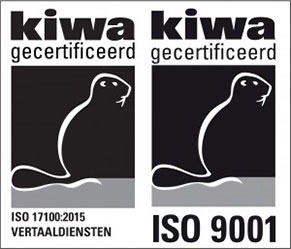Blog
- Information directly from the translation industry
- Advice from experts
On 30 November 2022, American based Open AI, introduced its chatbot named ChatGPT. Within 6 weeks, the application celebrated reaching 100 million users and we are talking about it nearly every day since.
And with good reason. We can discuss endlessly about the possibilities that this and similar applications can and will offer. From scientific research, coding and composing to writing poetry, making exams, developing business strategies to, of course…translating.
So it probably won’t come as a surprise that, following our previous blog, we want to dive deeper into the latter use of AI (See also: https://www.translationagency.com/are-machine-translation-chatgpt-and-other-artificial-intelligence-tools-suitable-for-quality-translations/).
AI and machine translations in practice
We are convinced that current and future translation applications offered by AI, have, and will become an integral part of the translation process and the methodology with which translators create their translations.
For now, we’re not getting into how and if AI should or shouldn’t be used for high-quality translations. As we already discussed in our previous blog, our daily experiences with AI and machine translations, strengthen us in our opinion that the journey from “occasionally useful” to the level of “sometimes reasonable” – which is where we are today – has been a long one. A journey of twenty years actually. The question remains, how we can grow from “sometimes reasonable” to “reasonable” to, ultimately, “reliable”. To achieve this, AI will have to learn how to copy human neurological processes, which is no easy feat. On the other hand,… it is not unthinkable.
Machine translations and quality
Based on what machine translations can offer now, we do embrace the technology, but we’re not going about this willy-nilly. As an ISO 9001 & 17100-certified translation agency, we consider the quality of our translations our key priority and reason for our existence. Until the contrary is demonstrated unequivocally, human translations made by specialist and professionally trained translators and editors, are and remain the sole way to deliver top-quality translations. Period.
Moreover, many of our business clients explicitly exclude machine translations. They rightfully question the limited quality and, thus, the usability of these texts. Besides that, they are concerned about data protection and the expected lack of regulation around AI, which may well drag on for many years.
But what if quality is less important?
There are, of course, clients for whom a perfect, human-made quality translation is a less important factor. They prioritise speed and price and are willing to compromise on quality. And with this huge hype around AI and machine translations these days, it’s only natural that companies want to experiment with it. From a business perspective, they understandably want to explore the possibilities AI can offer. Especially when translations are not “business-critical”.
Despite our aim to deliver the highest quality, we also want to accommodate our clients in this respect. And notwithstanding the limitations that machine translations impose on us, we hold fast to our goal to provide the best possible quality.
We distinguish two categories of (machine) translation projects requested by our clients.
Machine translation with post-edit.
The first option is for the client to send us a machine translation generated by themselves plus the source document. Or they ask us to generate a GOOD machine translation of the source document (yes, there are many bad ones).
A human, professional translator then checks the output created by the machine translation program against the source and corrects any errors and inconsistencies. This service is called a machine translation with post-edit. It still relies heavily on the translator’s knowledge and expertise, but it does speed up the translation process and the rates are lower compared to a traditional, human-made high-quality translation. And although this doesn’t rate as an ISO 17100 quality translation, the client still receives a reasonably good, corrected translation – faster and at a lower rate. We get these requests for texts such as press releases, blogs, presentations, and subtitles.
Machine translations with just proofreading.
The second option is for the client to send us an in-house generated machine translation (or ask us to prepare one) with the request to have the machine translation checked by a corrector (proofreading). This is what we call a machine translation with just proofreading. Such a process doesn’t include checking and correcting the translation against the source (as with post-edit). The translated text is only checked on grammar, context, and spelling.
Examples of such projects are product content for online shops, for which the text is of less critical importance (e.g., green chair, yellow chair, red chair, etc.), or when the text just has to be reasonably understandable. Naturally, clients requesting this service go for a fast delivery at the lowest rate. The quality of the translation may be of minor importance, but clients may have perfectly good reasons for accepting that.
So, this is how our clients and Translation Kings evolve with the new reality offered by AI and machine translations. Our clients learn, we learn, and AI learns. It’s a powerful development and an exciting journey that our industry embarks on. And Translation Kings is completely on board!

Translation Agency has the highest certificates for translation agencies: ISO 9001:2015 and ISO 17100:2015. Top quality and service are always our number one priority.


Translation Agency is a member of the VViN and EUATC; Organisations of translation agencies that work together to optimise quality and service.
